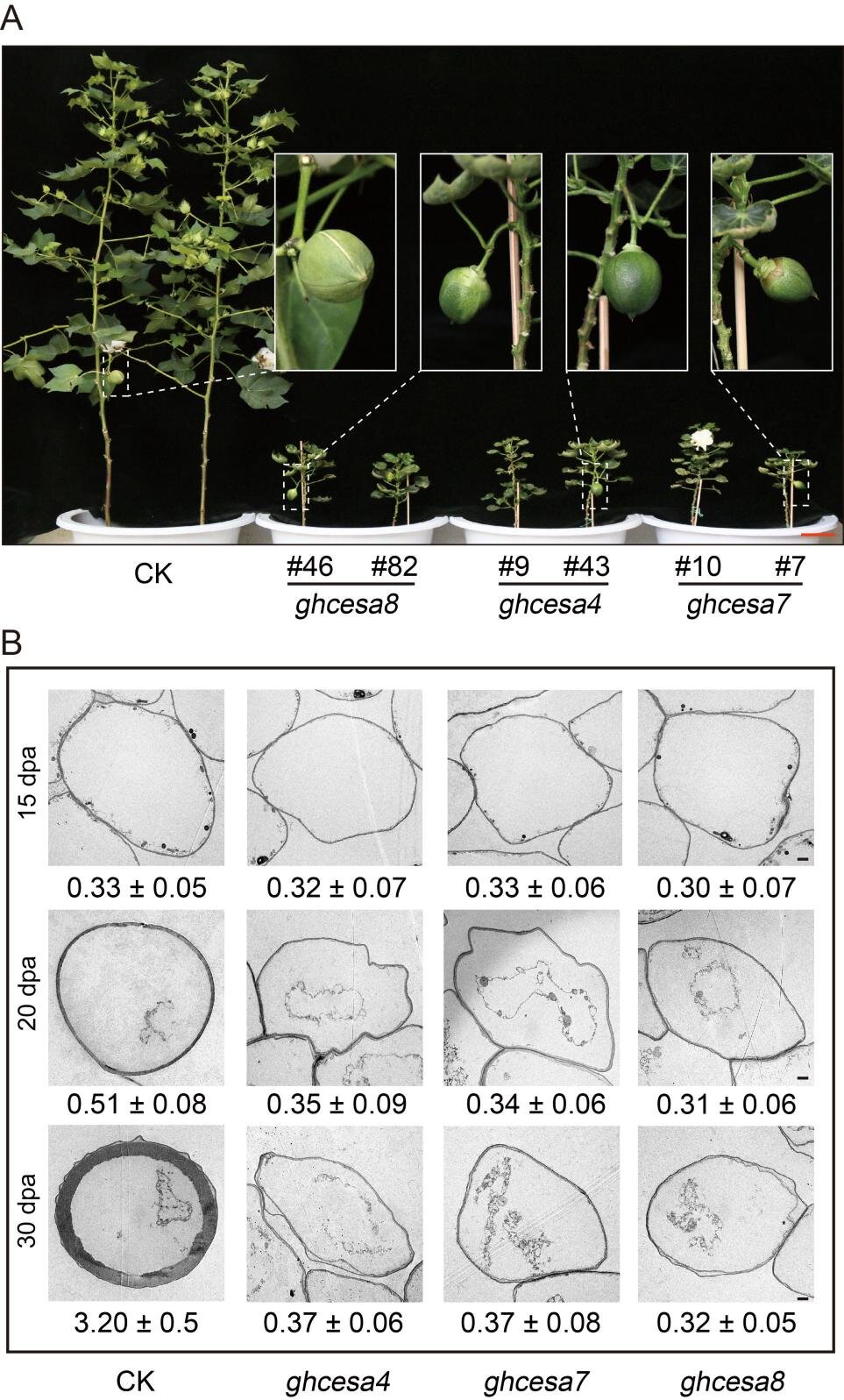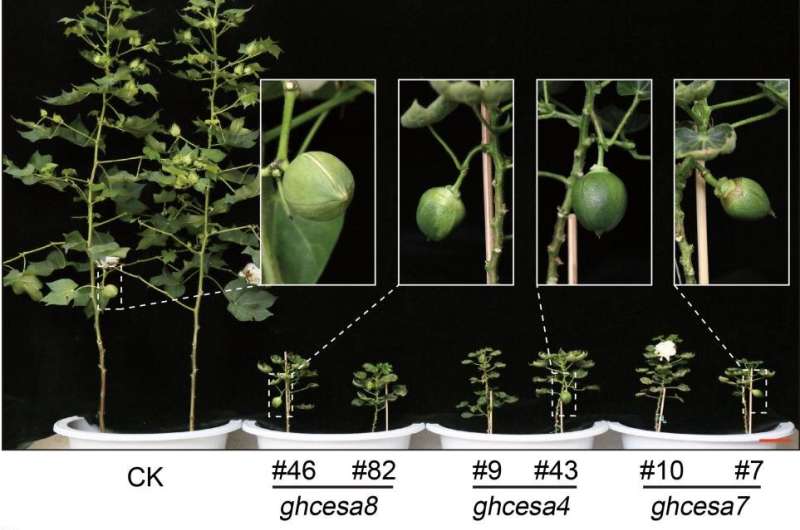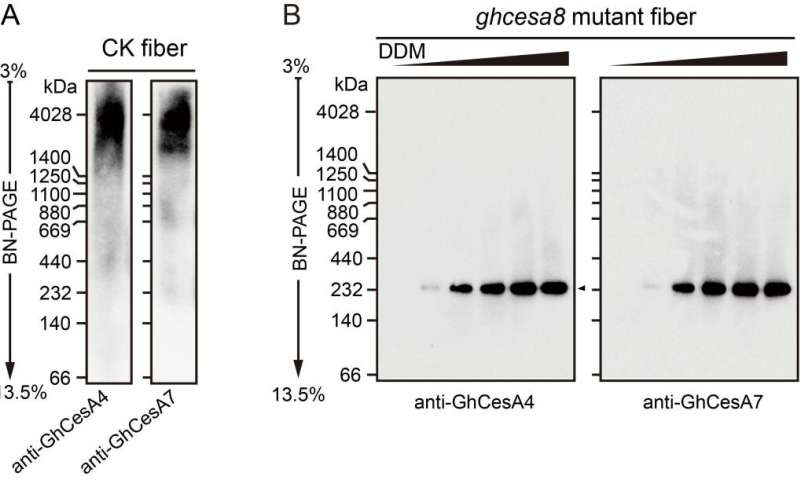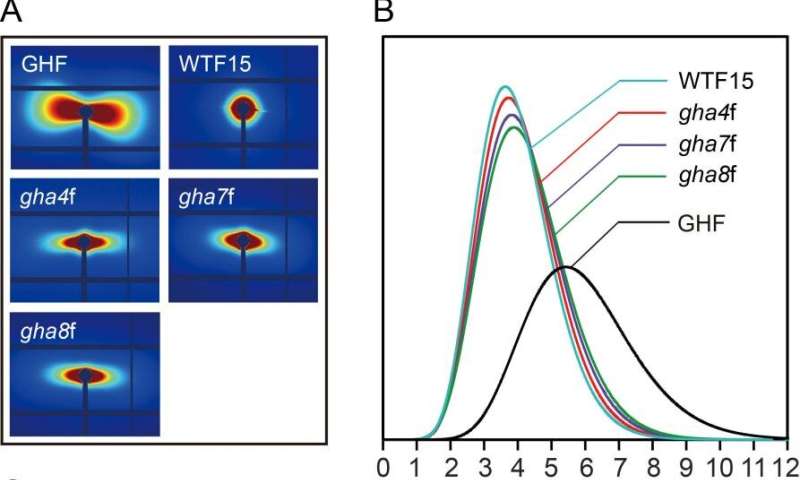

About 180 billion tons of celluloses are produced by the world’s vegetation annually, making this polysaccharide the most abundant biological macromolecule on earth. It is produced predominantly by vascular plants, by a large number of algae and also by some bacteria, protists and tunicates. Cellulose microfibrils used for cell wall deposition are usually synthesized at the plasma membrane by the cellulose synthase complex (CSC) that is composed of at least three types of cellulose synthase required for glucan chain elongation synergistically.
The CSC produces glucan chains and the size of the CSC may determine the number of glucose chains in the microfibril structures, making them different in different organisms. However, no biochemical or molecular evidence has so far been available as to whether the number of cellulose synthase subunits in different CSC is related to the synthesis of cellulose microfibrils with various numbers of glucan chains in a bundle, a number which is key to the strength or tension of the secondary cell wall.
In a paper published in Science China Life Sciences, Dr. Xingpeng Wen and Dr. Yuxian Zhu report that in cotton (Gossypium hirsutum) fibers harvested at the secondary cell wall synthesis period, GhCesA4, 7 and 8 assembled heteromerizely into a previously uncharacterized 36 protein polymers like cellulose synthase supercomplex.
This super CSC was observed specifically in samples prepared using cotton fiber cells harvested during secondary cell wall period, but not from cotton stem tissue or any samples obtained from Arabidopsis. Knock-out experiments performed on any one of these three genes resulted in the disappearance of the CSC along with dramatic growth defects that reduced adult plant heights to less than a quarter of the wild-type. Cotton fibers harvested from these ghcesa-defective plants showed absolutely no secondary cell wall thickening. The CSC prepared from wild-type cotton fibers showed the highest enzyme activity with huge reduction found in samples prepared from Arabidopsis stems or from one of the three knock-out cotton mutants.
-

(A) BN-PAGE identification of 36-mer-like CSC in wild-type cotton fibers using antibodies against GhCesA4 and GhCesA7. (B) Knock-out GhCesA8 gene resulted in depolymerization of the cotton fiber super CSC. Credit: Science China Press
-

(A) SAXS analysis of fiber cell materials to determine the diameter of each bundle in a different microfibril. (B) Polydispersity analysis of the five samples. Peak positions corresponding to the abscissa represent the diameter of microfibrils in each of the samples. (C) Comparisons of cross-sectional area and calculations for glucan chain numbers in each bundle of the microfibril from different materials. GHF, G. hirsutum fiber; WTF15, wild-type 15 DPA fiber; gha4f, gha7f and gha8f, fibers from ghcesa4, 7 and 8 mutants. Credit: Science China Press
The team found that GhCesA4, 7 and 8 restored phenotypes of their orthologous Arabidopsis mutants, potentially by reforming the CSC hexamers. Genetic complementation was not observed when non-orthologous cellulose synthase genes were used for genetic transformation, indicating that each of the three subunits is indispensable for CSC formation and also for full cellulose synthase function.
They also reported the existence of four distinct types of cellulose microfibrils in different plant materials: the secondary cell wall of wild-type cotton fiber contains 72 glucan chains in a bundle, fiber cells from primary cell wall period and cesa-defective cotton mutants contain 36-glucan chains while mung bean hypocotyl and spruce stems contain 24 glucan chains, with all other samples including celery petiole, stem tissues of cotton or Arabidopsis are composed of 18 glucan chains.
In summary, the researchers experimentally confirmed, for the first time, the existence of 36-mer CSC during the cotton fiber secondary cell wall synthesis period. All three cellulose synthases were required for the formation of this 36-mer CSC, only homodimers were observed in mutant cotton lines with one of the GhCesA4, 7 or 8 genes knocked-out. They produced the world’s first mature cotton fiber cell with no secondary cell wall deposition and revealed that the cellulose microfibrils in cotton secondary cell wall were composed of 72 glucan chains. Cell-free membrane extract from cotton fiber were able to synthesize long chains of β-1,4-glucan with high enzyme activity in an in vitro system. Characterization of the cotton CSC together with its product will facilitate our understanding of mechanisms controlling secondary cell wall biosynthesis in different plant species.
Plant polymers do not always act together to make beautiful shapes
Xingpeng Wen et al, Molecular studies of cellulose synthase supercomplex from cotton fiber reveal its unique biochemical properties, Science China Life Sciences (2022). DOI: 10.1007/s11427-022-2083-9
Science China Press
Citation:
Characterization of cellulose synthase supercomplex in cotton fiber (2022, May 6)
retrieved 6 May 2022
from https://phys.org/news/2022-05-characterization-cellulose-synthase-supercomplex-cotton.html
This document is subject to copyright. Apart from any fair dealing for the purpose of private study or research, no
part may be reproduced without the written permission. The content is provided for information purposes only.

